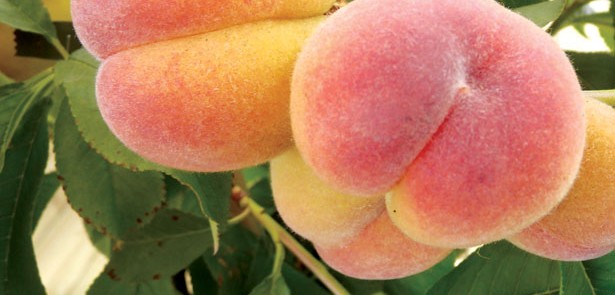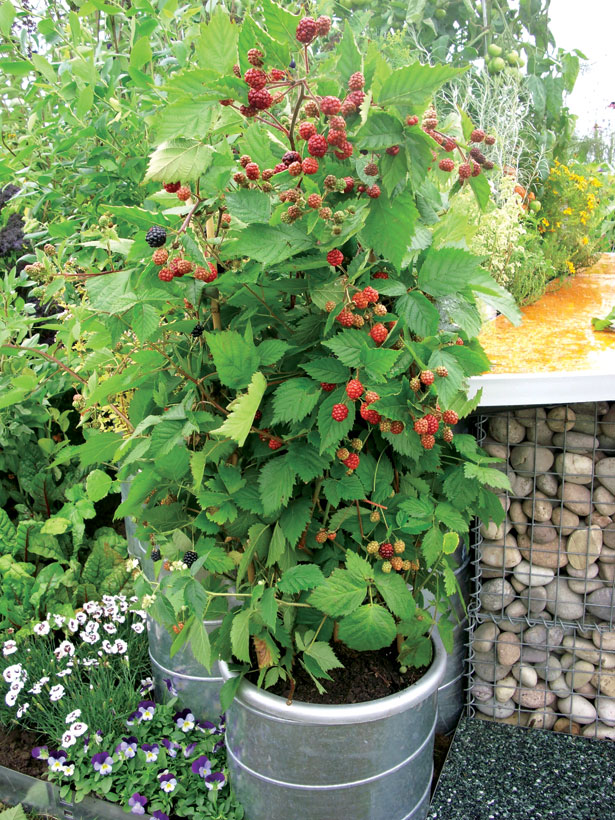Fruitful prospects

It may be winter but now’s the perfect time to plant many of the fruit trees and shrubs that will bring sweet, mouth-wateringly delicious fare for years to come. Benedict Vanheems gets us started
Anything you grow can be picked or plucked at its absolute peak. If you’ve never grown fruit before you’re in for a serious treat!
We all love fresh, wholesome food that’s packed full of flavour. The recent boom in growing our own is a sign of the times, as many of us become increasingly concerned about where our food comes from, its quality and environmental impact. But while vegetable seed sales have really taken off over the past few years, sales of fruit plants are some way behind. Maybe we’re worried they will take up too much space or they’re too complicated to look after. Thankfully for those curious about growing a few fruits at home, nothing could be further from the truth.
Get fruity
The case for growing fruit is compelling. Take a trip to the local supermarket and you will witness row upon row of gleamingly perfect fruit, but is there really much taste to these showpiece specimens? Like so many of our groceries, commercial fruits are usually grown for visual perfection rather than taste. Fruit is harvested before it is ripe so that the still-firm fruits are easier to transport and have a longer shelf life – just think about how hard a shop-bought pear normally is.
Choice is another compromise of the supermarket line-up. Count up the number of different apple varieties available in the average store; if you are lucky you’ll be able to choose between five or six different types, yet did you know there are well over 2,000 apple varieties grown in Britain? Cost is another important factor. A rather mean-sized punnet of blueberries, for example, will set you back anything from £2 to £4. Grow them yourself and you’ll have plants that will last for years, producing fresher fruits for a fraction of the price. Best of all, anything you grow can be picked or plucked at its absolute peak. If you’ve never tried growing your own fruit before you’re in for a serious treat!
Decisions, decisions
The area surrounding Peterborough boasts some of the richest land in the country. This good soil combines with fine summers to make this one of the most productive horticultural regions. This is good news for those who want to try growing fruit at home! The growing season in our part of the world is also long enough to try some of the more exotic fruits such as peaches, grapes and figs that might struggle in other parts of the country. The options available to us are plentiful.
One of the biggest advantages to growing fruit is the access you will have to a truly mindboggling range of varieties, each with its own personality, plus the control you can exercise over how they are grown. Many varieties have been bred or adapted over the years to suit a specific part of the country and the clue is often in the name. In Cambridgeshire, for example, you can crunch into apples such as ‘Huntington Coddling’ or ‘Cottenham Seedling’, or sink your teeth into the juicy plum ‘Cambridgeshire Gage’. These fruits will perform better here than anywhere else.
The microclimate of your garden will also play a part in what you can grow. Some gardens act as natural suntraps, or perhaps there is a corner of the patio bounded by brick walls that will reflect back the warmth of the day to encourage trouble-free ripening of fruit. Most plants need a warm and sunny position, though it is certainly true that there is a plant for every situation. While a cherry tree will need shelter and direct sunlight to thrive, gooseberries and blackcurrants perform well in cooler spots with dappled shade, so even if you think your garden can’t supply ideal conditions, you can still grow some fruit.
Size matters
Most gardeners are not blessed with sprawling acres, indeed the average garden size is just 90 square metres, which means large, traditional orchard trees are out of the question. Only a few decades ago commercial growers used ladders to reach their crop of tree fruits but modern breeding has done a lot to shrink the size of trees thanks to dwarfing rootstocks. Rootstocks control the ultimate size of a tree fruit with the most dwarfing keeping trees to no more than head height.
Tree fruits can also be trained to keep them smaller. If you haven’t got the space for a full-grown tree, then it will come as a relief to learn they can be pruned to stay manageable. Tree forms such as compact cordons limit tree fruits to a single stem, enabling them to be grown much closer together with just a couple of feet left between varieties. Squat, step-over fruits make an unusual edging to borders or vegetable plots, while wall-trained forms such as espaliers and fans mean trees can be grown flat, filling up an otherwise unproductive garden boundary. If you are lucky enough to have a south-facing wall then all the better; it will trap the day’s heat, enabling you to try your hand at fruits that would struggle in the open – the soft and juice-drippingly gorgeous nectarine, for example.
 If space in your garden is really tight and you can only grow one of each type of fruit, then make sure you buy self-fertile varieties. Some trees require a pollinating partner if they are to successfully set fruit, but a self-fertile tree can manage this on its own – a handy quality indeed. Another option is to look out for one of the so-called ‘family trees’, which have more than one variety grafted onto an individual rootstock. The result is a single tree that yields two or even three different types of fruits, so you might have a tree bearing both a cooking and an eating apple, or a tree yielding a mix of peaches and plums.
If space in your garden is really tight and you can only grow one of each type of fruit, then make sure you buy self-fertile varieties. Some trees require a pollinating partner if they are to successfully set fruit, but a self-fertile tree can manage this on its own – a handy quality indeed. Another option is to look out for one of the so-called ‘family trees’, which have more than one variety grafted onto an individual rootstock. The result is a single tree that yields two or even three different types of fruits, so you might have a tree bearing both a cooking and an eating apple, or a tree yielding a mix of peaches and plums.
 Gone to pot
Gone to pot
Just about every type of fruit, whether it be a tree, bush or cane fruit, is suitable for container growing, so long as you choose plants, where appropriate, that are grown on the most dwarfing rootstocks. Some fruits even thrive in containers – blueberries, for example, need acidic soil so even if you haven’t got these conditions you can grow them in containers of special ericaceous compost. Figs will only give their best if their roots are severely restricted, making them ideal potted subjects.
 If you want to grow a fruit in a container then select a healthy, well-balanced plant and start by potting it up into a container one size up from its nursery pot. Use loam-based compost such as John Innes Number 3 and mix in a little extra grit to aid drainage. You will need to keep plants well watered as they will depend almost entirely on you for their moisture. Feed them in the summer and pot on as necessary at the start of each year. Never be in a hurry to jump container sizes or you’ll run the risk of ‘swamping’ the rootball and setting your plant back.
If you want to grow a fruit in a container then select a healthy, well-balanced plant and start by potting it up into a container one size up from its nursery pot. Use loam-based compost such as John Innes Number 3 and mix in a little extra grit to aid drainage. You will need to keep plants well watered as they will depend almost entirely on you for their moisture. Feed them in the summer and pot on as necessary at the start of each year. Never be in a hurry to jump container sizes or you’ll run the risk of ‘swamping’ the rootball and setting your plant back.
Ground control
Of course, most fruits find their way into the ground and now’s the perfect time to buy in and plant new introductions. Here you have a choice between bare-root and containerised plants. Bare-root plants are just that – with ‘naked’ roots necessitating prompt planting. Bare-root fruits are only available in the dormant season, from November to March, though there will be a greater range of varieties offered in this format. Containerised trees will be more readily available from garden centres and can be planted outside of the dormant season. In both cases, look for healthy plants from trusted sources where plants will be disease-free and raring to grow.
Planting is perhaps the most important stage of any fruit’s life; get this right and your fruit should thrive with few problems. Start by preparing the ground a few weeks before planting. Select an appropriate spot that is free-draining and ideally in sun. Now clear away all traces of weeds, particularly pernicious perennial weeds such as couch grass or bindweed which can be tricky to remove once the fruit has established. Dig over the ground, incorporating ample well-rotted manure or garden compost to improve both the structure and fertility of the soil.
Allow the ground to settle then, come planting time dig a hole large enough to easily accommodate the roots. Set the plant into position and backfill with the improved soil, pushing down the soil as you go to firm the roots firmly into place. Some trees will require a supporting stake at this point. To provide this, drive a pressure-treated stake vertically into the ground to a depth of around 60cm and tie the trunk to the stake using tree ties.
Whatever you do this winter, take some time to explore the world of fruit trees, bushes and canes. The promise of fresh, pesticide-free fruit of the highest quality and flavour should tempt you to give them a go. When you pick your first fruits you’ll realise it’s all been worth it!
















